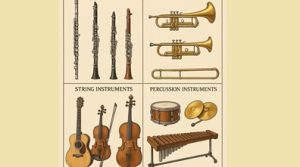Understanding Strophic Form in Music
Understanding Strophic Form in Music
The strophic form enhances the stability of music through the repeated use of a simple melody throughout a song.

This repetition provides the listener with a reassuring sense of commonality, on which he can concentrate while listening to an evolving outlook of lyrics.
The structure fits well with narrative songs or songs that want to give out a strong message since it provides a trusted framework for storytelling.
Strophic Form in Music
From a compositional and performance standpoint, the strophic form is easy to compose and perform.
A composer does not have to venture into writing new music for every verse, creating a highly accessible and functional form.
Historical Background and Evolution
The very notion of strophic form sprung up in the earliest civilizations, where communal singing and oral traditions maintained the repetition of a melodic line to facilitate memorization.
The Evolution of Strophic Form
From the medieval world with the introduction of music notation, it brought forth strophic form in both sacred and secular compositions.
The Renaissance and Baroque periods witness composers like Monteverdi and Schubert who have taken strophic forms to operatic and art songs, with the intent of its showing the emotional depth and clarification of the narrative.
The form has grown through time with the changing characteristics of all genres and styles in different surroundings and cultures across the world.
Strophic Form in Music
The strophic has been one of the basic and most powerful forms of music to be truly very simple and effective in unfolding a development of lyrics over time.
This fusion of repetition and remembrance makes it a highly effective mode for composers and performers — whether in classical art songs, folk ballads, or modern pop.
Strophic form relates to the musical structure whereby the same or a similar melody is repeated for successive stanzas or verses of a song.
Importance of the Strophic Form
The importance of strophic form through the history of musical composition is marked by its emphasis on the forces of repetition and variation.
The strophic form has always been popular, beginning with medieval wandering troubadours and adapting into present-day chart-toppers.
Strophic form is adopted in maintaining the same and fixed melody that breeds familiarity and coherence, thereby reinforcing the themes and emotions of the song.
Exemplary Strophic Forms in Music
You can find this form in many of the musical traditions, from ancient popular songs to the most modern pop hits:
- Classical Illustration: Strophic Art Song is represented at the front in the instance of Franz Schubert’s
- Das Wandern from Die schöne Müllerin where every couplet is set to the same music, thus strengthening its thematically repetitive quality.
- Fold and Hymns: Strophic form appears to underline the folk ballads and hymns like Scarborough Fair and Amazing Grace because they cause brightness and exposure.
The Function of Strophic Form
Enhanced stability through the use of the same melody for the duration of the song in the strophic form
Such repetition gives listeners a sense of continuity and allows them to concentrate on the development of the lyrics and formations.
This structure works well especially for telling stories or songs that have heavy messages since it builds a faithful foundation for the plot.
Strophic form becomes advantageous to composers and lyricists when it comes to reduced compositional difficulty and less demanding performance requirements.
The reuse of a single melody instead of new music for each verse is more efficient and easier on composers and lyricists.
Final Thoughts
The strophic form is one of the oldest and most flexible song forms existing in music.
Repetition combined with flexibility built it as a pillar through folk music, classical, country, pop, and other genres.
The form may become boring, but skilled composers and songwriters make it alive through story-telling lyrics and variations in music.
If you have ever listened to a traditional folktale ballad, a classical art song, or a contemporary country hit, then you have most certainly encountered strophic form.
Its capacity to carry all of the feelings, tales, and messages through repetition will make this form an extremely enduring one in the music of both today and years into the future.
Frequently Questions People Asked
How does strophic differ from other lyrical settings?
it consists of repeating the same melody for every verse or stanza while changing the words; thus, altering the lyrics continuously, but the music remains the same.
Unlike other forms, such as binary, which introduces different sections with different thematic material, the strophic form emphasizes lyrical content-both storytelling or lyricism, and emotional depth.
How do composers keep strophic songs interesting?
Whether by the use of changes in dynamics, tempo, or instrumentation between verses to maintain listener interest, or by the broader arch of the lyrics themselves-i.e. how the lyrics progress thematically, narratively, or emotionally-changes layer upon layer to imbue each repetition with a fresh meaning.
Does strophic still have its relevance in popular realism, or does it thrive mainly in traditional and classical genres?
Of course, the form continues to perform useful work in modern music.
A considerable number of extensive contemporary ballads, some from the folk tradition, and even a few rock or pop songs use this structure of music.
It is perhaps through its simplicity and attention to lyrics that makes it so powerfully carry storytelling or emotional expression.

How do modern artists modify strophic forms concerning today’s music?
Today, the basic is varied in several ways, using choruses or refrains between stanzas; even introducing slight melodic or harmonic changes in subsequent stanzas allows for blending forms with bridges.
Such adaptations add some color, yet keep the essence of the form, so that it can move forward in life and change.





